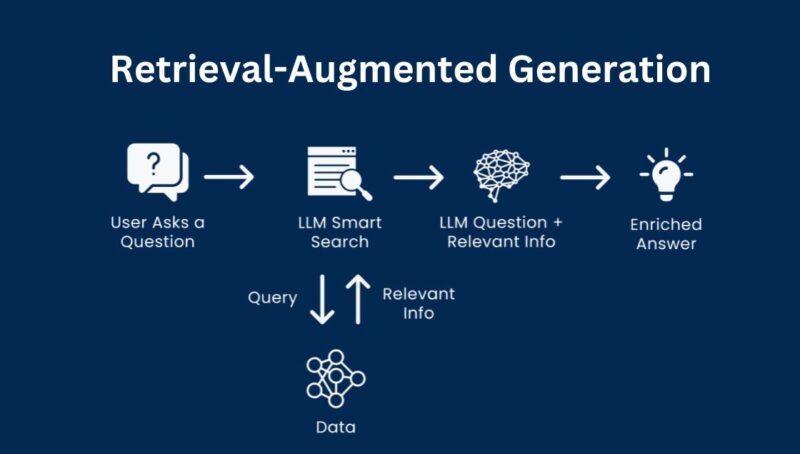Open-Source LLMs for Software Engineering: Revolutionizing SaaS and Mobile Development
This white paper explores the transformative potential of open-source Large Language Models (LLMs) in modern software engineering, specifically within the context of multi-tenant SaaS applications and mobile development.
1. Introduction
LLMs have emerged as powerful tools with the capacity to revolutionize software development. Their ability to understand, generate, and manipulate human language opens new avenues for automation, improving developer productivity, enhancing code quality, and accelerating the development lifecycle. This paper delves into the practical applications of open-source LLMs within the software engineering domain.
2. Open-Source LLMs: A Landscape
- Hugging Face Transformers: A leading platform providing access to a diverse range of pre-trained transformer models, including numerous open-source LLMs.
- Examples: BERT, GPT-2, GPT-Neo, BART, DistilBERT, Code-cushman-001, StarCoder
- EleutherAI: A research organization dedicated to developing and releasing cutting-edge open-source AI models.
- Examples: GPT-NeoX, GPT-J, GPT-Neo
- Meta AI: Releases open-source models like OPT and Llama, with a focus on research and democratizing access.
- Stability AI: Known for Stable Diffusion (image generation), also releases some language models.
3. Applications in Software Engineering
- Code Generation:
- Automated Code Completion: LLMs can predict and suggest code snippets, entire functions, or even entire modules based on developer input, significantly accelerating the coding process.
- Code Translation: Translate code between different programming languages (e.g., Python to Java, JavaScript to TypeScript).
- Refactoring and Optimization: Identify and suggest code improvements, such as better variable naming, removing redundant code, and optimizing algorithms.
- Software Documentation:
- Automated Documentation Generation: Generate comprehensive and high-quality documentation from code comments, function signatures, and code structure.
- Natural Language Understanding of Documentation: Allow developers to easily search and understand complex documentation using natural language queries.
- Testing and Debugging:
- Automated Test Case Generation: Generate unit tests, integration tests, and end-to-end tests based on code specifications and expected behavior.
- Bug Detection and Resolution: Analyze code for potential bugs, suggest fixes, and even generate patches to address identified issues.
- Security:
- Vulnerability Detection: Identify potential security vulnerabilities in code, such as SQL injection, cross-site scripting (XSS), and buffer overflows.
- Security Audit Assistance: Assist security audits by analyzing code for compliance with security best practices and identifying potential security risks.
- Multi-Tenant SaaS Development:
- Personalized Development Experiences: Tailor development environments and workflows to individual developer preferences and skill levels.
- Automated Tenant Provisioning and Management: Automate the creation and management of tenant-specific environments, configurations, and data.
- Improved Customer Support: Utilize LLMs to enhance customer support interactions, providing faster and more accurate responses to customer inquiries.
- Mobile Application Development:
- Cross-Platform Development: Generate code for multiple platforms (iOS, Android) from a single source, improving development speed and reducing costs.
- UI/UX Design Assistance: Generate UI/UX designs, suggest design improvements, and even create basic prototypes based on user requirements.
- Performance Optimization: Analyze mobile application code to identify performance bottlenecks and suggest optimizations.
4. Use Cases in Detail
- SaaS Application Development:
- Automated Deployment Pipelines: Create and manage CI/CD pipelines with LLMs, automating tasks like building, testing, and deploying applications.
- Personalized Onboarding Experiences: Provide personalized onboarding experiences for new users based on their roles, skills, and preferences.
- Predictive Maintenance: Predict potential issues and proactively address them before they impact users or disrupt service.
- Mobile Application Development:
- AI-Powered Mobile App Development Platforms: Create platforms that allow developers to build mobile applications with minimal coding using natural language instructions.
- Intelligent Code Completion for Mobile Development: Provide intelligent code completion specifically for mobile development frameworks (e.g., React Native, Flutter).
- Personalized App Recommendations: Recommend relevant mobile applications to users based on their interests, preferences, and usage patterns.
5. Challenges and Considerations
- Data Quality and Bias: Ensure the data used to train LLMs is high-quality, diverse, and free from biases to avoid generating biased or inaccurate outputs.
- Explainability and Interpretability: Understand and explain the reasoning behind LLM-generated outputs, especially in safety-critical applications.
- Security and Privacy: Address security concerns related to the use of LLMs, such as data breaches, malicious code generation, and the potential for misuse.
- Resource Constraints: Optimize LLMs for efficient execution on resource-constrained devices, such as mobile phones.
6. Conclusion
Open-source LLMs have the potential to significantly impact the software development landscape, particularly for multi-tenant SaaS applications and mobile development. By embracing these technologies, software engineering teams can unlock new levels of productivity, efficiency, and innovation.
7. References
- Books:
- "Hands-On Machine Learning with Scikit-Learn, Keras & TensorFlow" by Aurélien Géron
- "Deep Learning" by Ian Goodfellow, Yoshua Bengio, and Aaron Courville
- Papers:
- "Attention Is All You Need" by Ashish Vaswani et al. (2017)
- "BERT: Pre-training of Deep Bidirectional Transformers for Language Understanding" by Jacob Devlin et al. (2018)
- "GPT-3: Language Models are Few-Shot Learners" by Tom B. Brown et al. (2020)
- Websites:
- Hugging Face: https://www.eleuther.ai/
- Meta AI: https://stability.ai/
This white paper provides a foundational understanding of the potential of open-source LLMs in software engineering. Continued research and development are essential to fully realize the transformative potential of these technologies.
Disclaimer: This information is for general knowledge and informational purposes only. It does not constitute professional advice.
This comprehensive white paper aims to provide a valuable resource for software engineers and organizations looking to leverage the power of open-source LLMs in their development processes. Contact ias-research.com for details.



